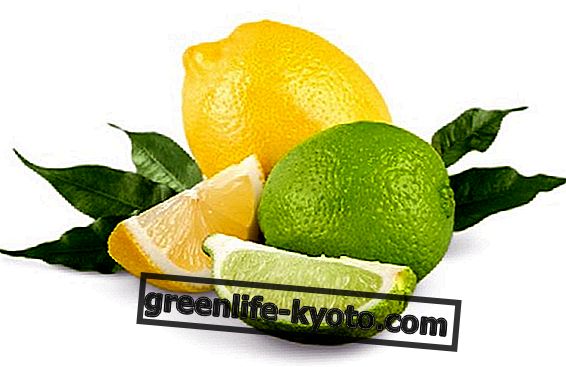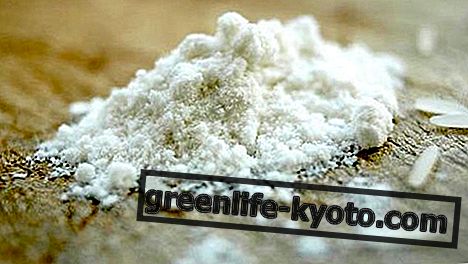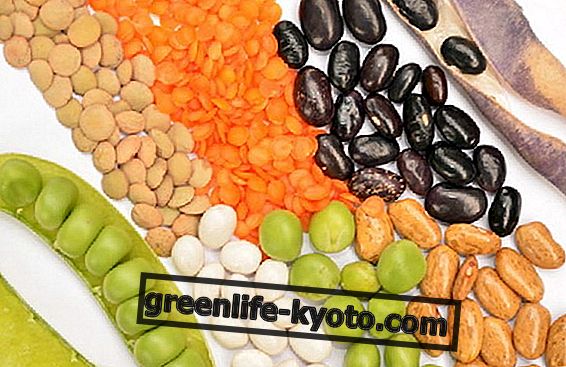
Lime and lemon are likely to seem the unripe version of the other, but it is not so.
These are two different types of citrus fruit, with slightly different characteristics, uses and properties. Let's compare lime and lemon together.
Lime and lemon, two citrus fruits in comparison
Lime and lemon belong to the same botanical family, namely that of the Rutaceae .
Lemon ( Citrus limon ) indicates both the fruit and the plant, while the tree that has the lime as fruit is called a lime ( Citrus aurantifolia ), the only citrus fruit that grows in tropical climate (and in Egypt). As for the harvest period, the lemons are harvested when fully ripe while the lime is still green, since they are much more juicy.
Comparison between lime and lemon:
> Fruit: both have an oval shape but the lemon is larger on average. As for the color, the lemon is yellow while the lime - as we know it - has a green skin (in fact if left to mature on the tree it becomes yellow-orange)
> A citido : the lime pulp contains more of it (up to 6%), making it much harder and more fragrant than the lemon
> Vitamin C : is greater in the lemon, which contains about 53 milligrams per 100 grams compared to lime, which contains about 29 milligrams per 100 grams
> Vitamin A: the lime contains more than twice that of the lemon (50 International Units against 22).
> Nutritional values: they are very similar, between lemon and lime, apart from the significant differences in Vitamin C, A and Citric acid, both provide about 30 calories and about 3 grams of fiber per 100 grams.
> Use in the kitchen : lemon and lime are rarely consumed as fresh fruit, but both are widely used in the kitchen to flavor fish-based second courses, fresh fruit salads, jams and jams, fruit juices. The lime juice is also used to prepare famous cocktails, such as the Daiquiri, while with the lemon peel the Limoncello liqueur is made, typical of Campania.
> Other uses: Lemon juice and lime juice can be used for hygiene and skin care . Lime and lemon facilitate digestion by increasing the secretion of gastric juices, thanks to the presence of citric acid.
Lime and lemon, two citrus fruits compared: lime in short
Lime ( Citrus aurantifolia ) is a species native to Asia . It is an irregularly shaped tree (up to 3-5 meters high) with thorny branches, oval leaves, rounded at the base and pointed at the apex, light green. The inflorescences have from two to seven small white and perfumed flowers, which are produced in different periods of the year.
The fruits are slightly oval, green or yellowish-green, although some varieties have yellow fruits when ripe; the pulp is acid and the skin is thin and rich in essential oils.
Lime and lemon, two legumes compared: lemon in short
Lemon ( Citrus limon ) is native to India and Indochina . According to some studies, the lemon plant was born from a very ancient hybrid of cedar and pomelo, although for centuries lemon has been an autonomous species. According to other scholars, it would be a natural hybrid between cedar ( Citrus medica ) and lime ( Citrus aurantifolia ).
The lemon tree is up to 6 meters high, dark green leaves above and lighter below. The flowers, very fragrant, are solitary or in pairs and in favorable weather conditions are produced almost all year round . The fruits are oval or oblong, with pointed apexes: normally the peel is yellow and thick, but there are variegated varieties of green or white.
Lemon is a species that flourishes several times in a year : the main flowering flows are in spring, with the production of winter lemons, and in September, from which the so-called verdelli (lemons that ripen in the following summer) derive. Unlike other citrus fruits, lemons can also mature once detached from the plant .













